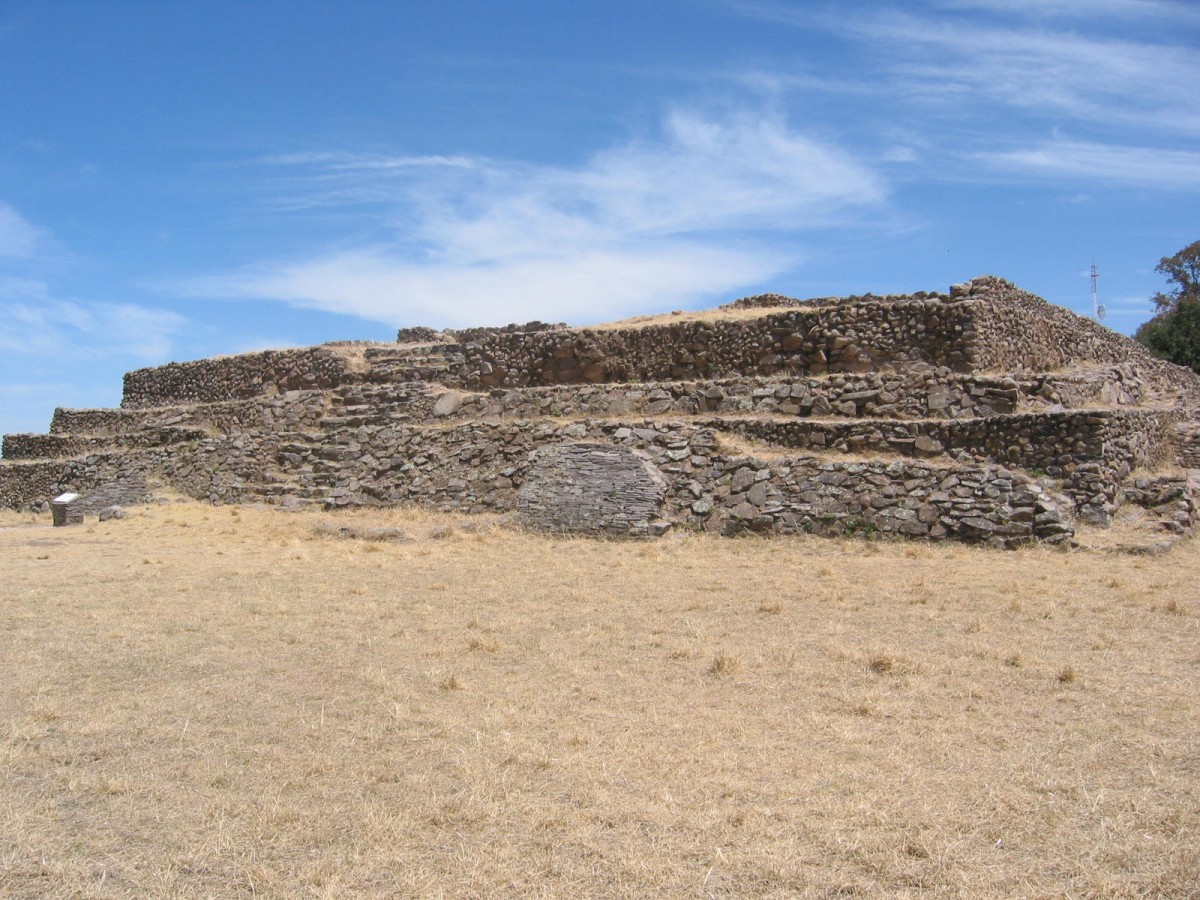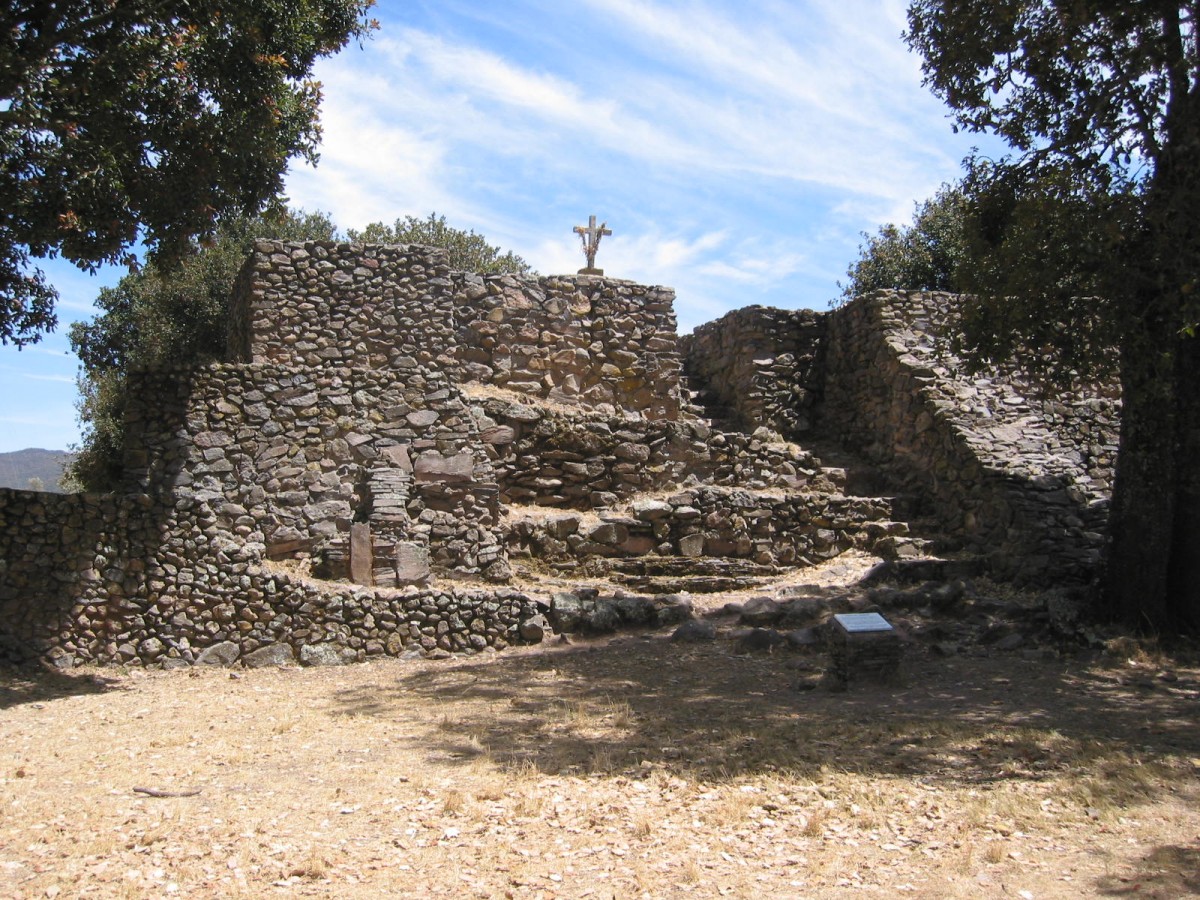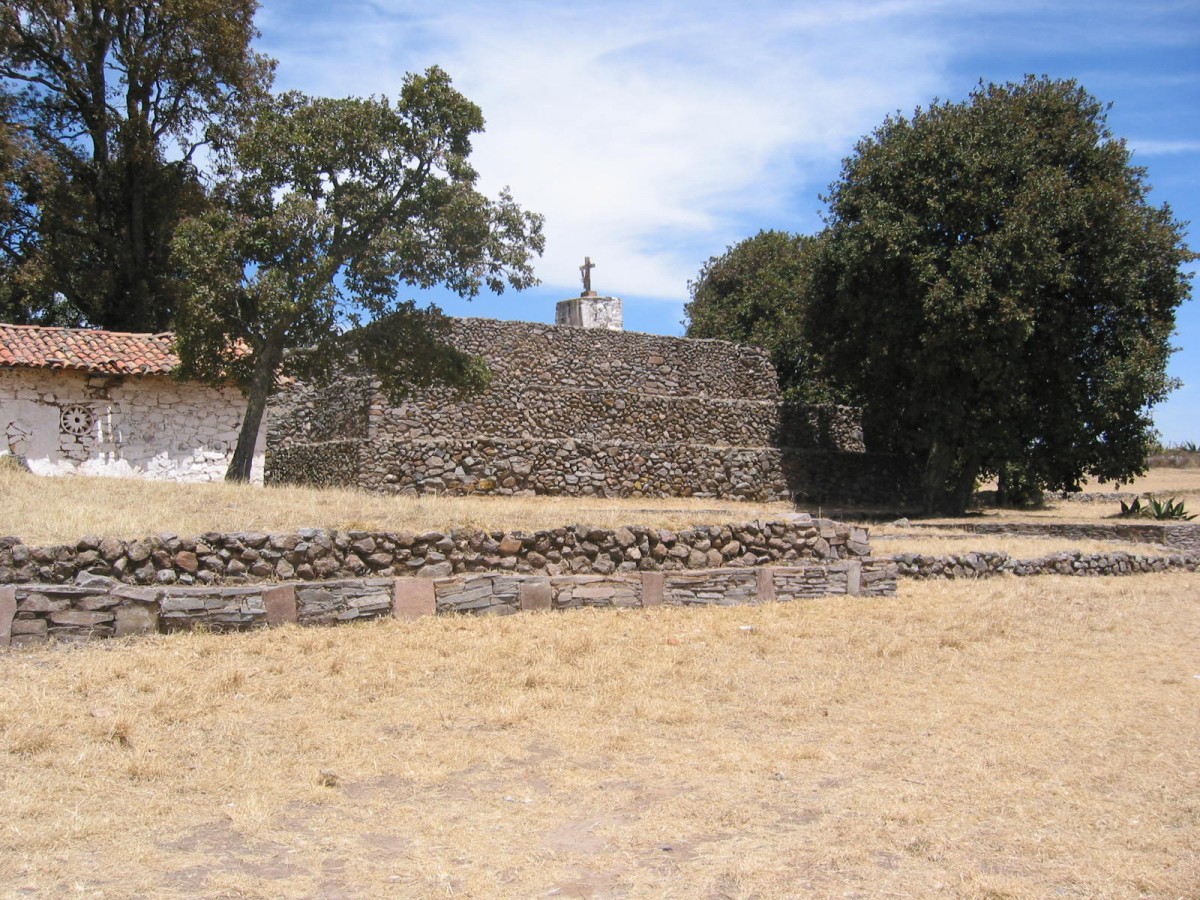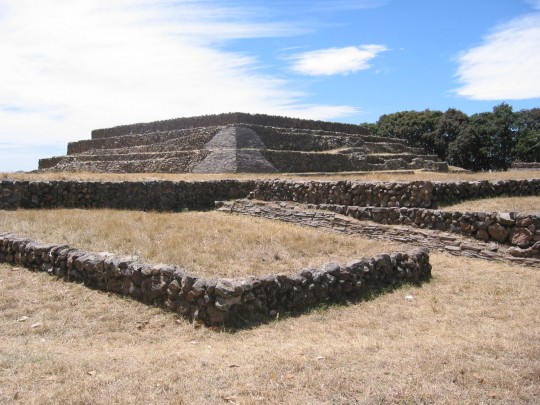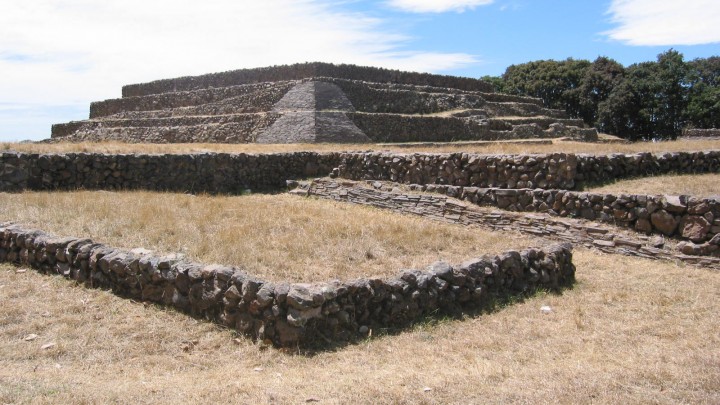Huamango
Place of beams or Place of uncarved wood
This important Otomi settlement was built in the upper part of the plateau of San Miguel which was a perfect site for monitoring movements in the valley of Acambay, or Los Espejos, in the State of Mexico.
About the site
The ancient inhabitants of Huamango confronted a terrain that was difficult to build on. This difficulty was skillfully handled by means of artificial leveling and the preparation of wide terraces, over which the people built plinths, pyramids and residential platforms. The site is principally arranged with defensive needs in mind. This was the reason why setback walls were built, which in certain sections reached a height approaching seven feet.
In general terms the site covered an area close to 15 acres. It is divided into two architectural complexes located in the far west (A) and east (B) of the plateau. Complex A has a plinth with two volumes overlain with a stairway, known as The Palace. Complex B consists of a plinth for a temple with three superimposed volumes. The structure is known as the Temple of the Warrior. In front of this building there is a small altar, while in the surrounding area there were several platforms for residential use.
The research into this archeological site has led to the tentative dating of two periods of occupation, from 900 to 1100 AD and from 1200 to 1300 AD. In terms of the first, there are similarities with the site of Tula (incense burners, braziers and pots which were used for burial offerings), while the second period correlates to the sites of Teotenango and Calixtlahuaca.
Up to the present the excavation of Huamango has focused on the civic-ceremonial center made up of religious and residential structures with an area of 650 feet from north to south and 1,000 feet from east to west. We know that both the temples and the dwellings were roofed, with a structure of laths (morillos) over which a thick layer of mud was placed to create a perfect seal. Some of the monuments were also covered with small rectangular slabs. All covered spaces used to have stucco floors; fireplaces have also been found, which were used for the preparation of food and to warm the rooms.
The archeological material found in these excavations, including some incense burners was taken to the Antonio Ruiz Pérez Museum (opened in 1999) located in the municipal town of Acambay.
In general terms the site covered an area close to 15 acres. It is divided into two architectural complexes located in the far west (A) and east (B) of the plateau. Complex A has a plinth with two volumes overlain with a stairway, known as The Palace. Complex B consists of a plinth for a temple with three superimposed volumes. The structure is known as the Temple of the Warrior. In front of this building there is a small altar, while in the surrounding area there were several platforms for residential use.
The research into this archeological site has led to the tentative dating of two periods of occupation, from 900 to 1100 AD and from 1200 to 1300 AD. In terms of the first, there are similarities with the site of Tula (incense burners, braziers and pots which were used for burial offerings), while the second period correlates to the sites of Teotenango and Calixtlahuaca.
Up to the present the excavation of Huamango has focused on the civic-ceremonial center made up of religious and residential structures with an area of 650 feet from north to south and 1,000 feet from east to west. We know that both the temples and the dwellings were roofed, with a structure of laths (morillos) over which a thick layer of mud was placed to create a perfect seal. Some of the monuments were also covered with small rectangular slabs. All covered spaces used to have stucco floors; fireplaces have also been found, which were used for the preparation of food and to warm the rooms.
The archeological material found in these excavations, including some incense burners was taken to the Antonio Ruiz Pérez Museum (opened in 1999) located in the municipal town of Acambay.
Did you know...
- The high walls give this site a strategic defensive appearance.
- It is likely that the altar in front of the Palace was for religious ceremonies, including sacrifices, and that the surrounding area was used for recreational and educational purposes.
Practical information
Tuesday to Sunday to 10:00 to 17:00 hrs.
Free entry
Se localiza a 5 kilómetros al norte de la cabecera municipal de Acambay, al norponiente del Estado de México.
From Mexico City, take the road to Toluca and then the highway towards Atlacomulco. Continue towards Acambay and Dongú and follow the deviation towards the east.
Services
-
+52 (722) 167 1325
-
This email address is being protected from spambots. You need JavaScript enabled to view it.
Directory
Responsable
Subdirección de Rescate y Conservación de la Secretaria de Cultura y Deporte del Gobierno del Estado de México
This email address is being protected from spambots. You need JavaScript enabled to view it.
+52 (722) 214 6300


